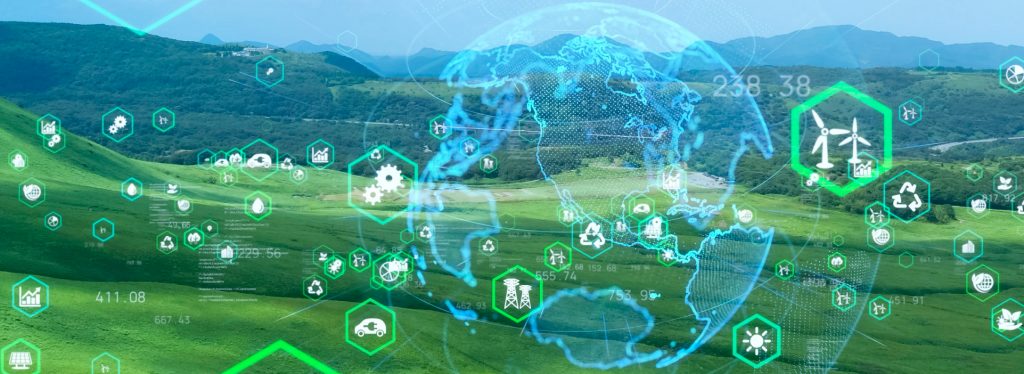Advantages of Renewable Hydrogen
Renewable hydrogen is the ultimate ally to successfully advance the transition towards clean energy and achieve decarbonisation, and it is the fuel that we’ve been waiting for. Since it is produce using renewable sources, renewable hydrogen does not contribute to global warming.
Hydrogen has a clear advantage over other alternative fuels: its extremely high energy density. Additionally, since it can be produced through renewable electricity-based processes, it offers an energy storage solution that is not affected by weather conditions or storage degradation over time. Hydrogen also presents a challenge—its low volumetric density. This is solved by compressing the gas or, in the short term, liquefying it.
HYFIVE'S COMPETITIVE ADVANTAGES
Vertical integration, and first-mover advantage and focus on doable projects in the near term mitigates the risks of a nascent emerging market, while retaining full upside potential.
HYFIVE'S HIGHLIGHTS

First Mover Advantage
Development and initial engineering already started in 2019. Significant early know-how of end-uses, costs and offtaker demand.
Customer Centric
business model with anchor offtakers already committed.
Vast Scale-Up Potential
in order to meet growing sector demand and meeting the EU ambitions.

Strategic Locations Secured
with considerable scale-up potential and key local, regional and pan-European transport links via pipelines and deep sea ports.
Technology Agnostic
selecting the technologies that best suit each client.
Lean and Mean
committed to work efficiently and provide quick answers.

A one stop shop solution
HyFive has the imagination, the knowledge and the experience to manage a project from all points of view:
- technical (conceptual and basic engineering, technology selection, permitting, EPC).
- commercial (h2 offtake agreements, optimized energy sourcing, partnering strategy, consortium and SPV leadership).
- finance (capital solutions, equity investment, debt, business modelling).
Renewable Hydrogen: Carbon Free, Renewable and Readily Available
Hydrogen is the most abundant element in the universe, and its supply is virtually limitless. It can be used on site where it is produced, and it is also safe to transport and store. When converted into a carrier, such as ammonia, a zero-carbon fuel that has many applications, renewable hydrogen is a transportable renewable energy.
One of the most prominent advantages of renewable hydrogen is that, unlike biofuel or hydropower, it doesn’t require large areas of land for its production. It can be produced wherever there is water and cheap electricity, and it can be used for multiple applications. Unlike other sources of power or heat, renewable hydrogen can be stored in large quantities for extended periods of time. It can also be produced from excess renewable energies wherever there is sun, wind or any other renewable source and stored in large amounts for a long time. This makes it the ideal candidate for large-scale deployment.
A CLEAN ALTERNATIVE WITH MANY APPLICATIONS
Renewable hydrogen is a power source created using renewable energy instead of fossil fuels. An electric current powered by solar or wind energy is used to split water into hydrogen and oxygen; the resulting hydrogen is pollutant-free. Since renewable hydrogen is produced through the electrolysis of water, the only byproduct is oxygen and water.
In the short term, there are 3 immediate uses for renewable hydrogen:
Additionally, renewable hydrogen can be used in both gas or liquid form, and it can be blended with existing gas pipelines to power household appliances and industries. Thus, renewable hydrogen will play an important role in balancing the intermittent supply modalities with the challenging end-user demands, avoiding the need for significant early investment to upgrade grid infrastructure.
ADVANTAGES OF HYDROGEN FUEL CELLS
Hydrogen fuel cells present several advantages over conventional power sources. They can be used to power machines and devices that use electricity, such as electric vehicles or electronic devices, and be used as backup power to secure the supply. Unlike traditional batteries, hydrogen fuel cells don’t need to be recharged and won’t run down, as long as they are supplied with hydrogen fuel.
Moreover, hydrogen fuel cell technology is able to provide a high-density energy source, with a good energy efficiency, which enables a higher energy production per pound of fuel than other alternative energy sources.
And since hydrogen fuel cells don’t release greenhouse gas emissions, they don’t have a carbon footprint while in use, the air quality isn’t impacted, and pollution rates are reduced. Furthermore, hydrogen fuel cells don’t produce visual or noise pollution, like other sources of renewable energy, such as wind power. Much like electric cars, hydrogen powered vehicles are silent.
Road Transport Advantageous Fuel
With highest authonomy and refueling times comparable to conventional refueling, road transport can take advantage to hydrogen to decarbonize, specially for heavy duty vehicles.
Reliability
in recent years, hydrogen fuel cell technology has proven itself in adverse conditions, such as cold temperatures as low as -40ºC, and tough weather like hurricanes and winter storms.
Zero-Emission Power
unlike battery acid or diesel fuel, hydrogen fuel cells don’t produce any harmful emissions, eliminating the costs of handling and storing toxic materials. The only byproducts are heat and water, making hydrogen fuel cells a sustainable and zero-emission power source.
Scalable
hydrogen fuel cells are a scalable product that can be designed to meet the power needs of various customers, whether it be for on-road electric vehicles, material handling fleets or stationary power, optimizing costs.
Lower Operational Costs
since hydrogen fuel cells eliminate the need to change, charge and manage batteries, they reduce labour, time, space and peak power demands. These units run longer than lead-acid batteries and can be fuelled in a matter of minutes, thus substantially reducing the vehicle and personnel downtime. Compared to combustion generators for stationary power and batteries, fuel cells save time and money on maintenance.
THE FUTURE OF RENEWABLE HYDROGEN
The plans and projections for the future of renewable hydrogen and fuel cells include replacing fossil-based hydrogen with renewable hydrogen in industrial processes, transportation and manufacturing, reducing substantial amounts of carbon emissions and making a significant contribution to the climate global targets. In addition, the use of hydrogen will contribute to energy independence and reduce market fluctuations.
One of the challenges that hydrogen fuel cells face is decreasing its cost without compromising performance. The cost of building and maintaining hydrogen stations also needs to decrease in order for the market to be able to support a hydrogen-based economy.
With the right legal framework and timely investments, renewable hydrogen is estimated to be cost-competitive by 2030.